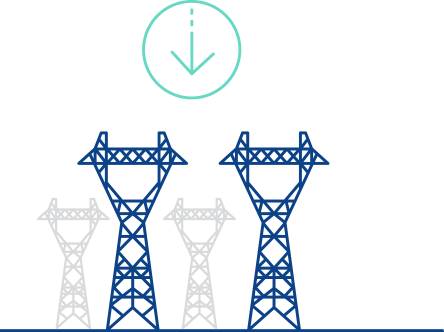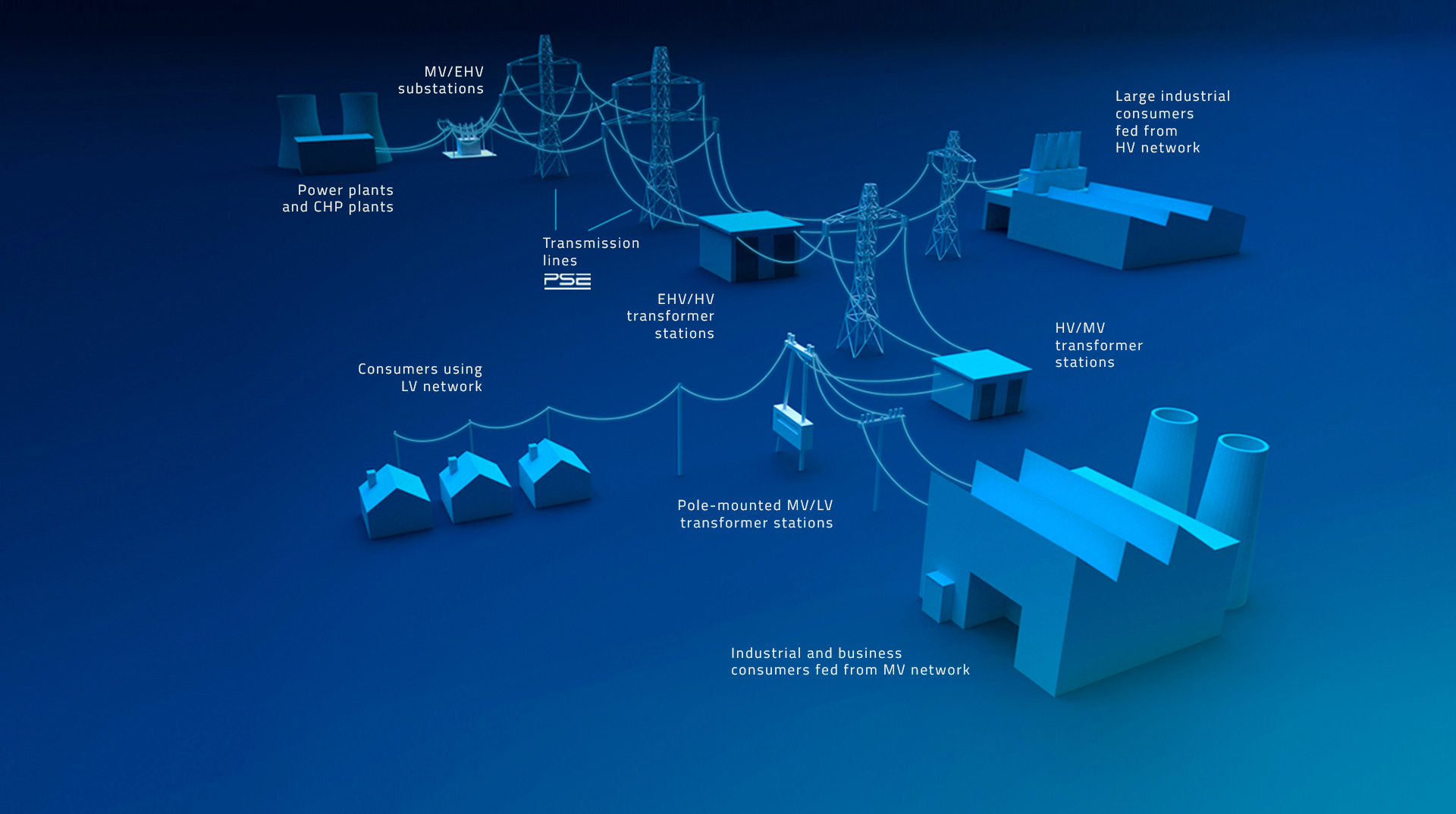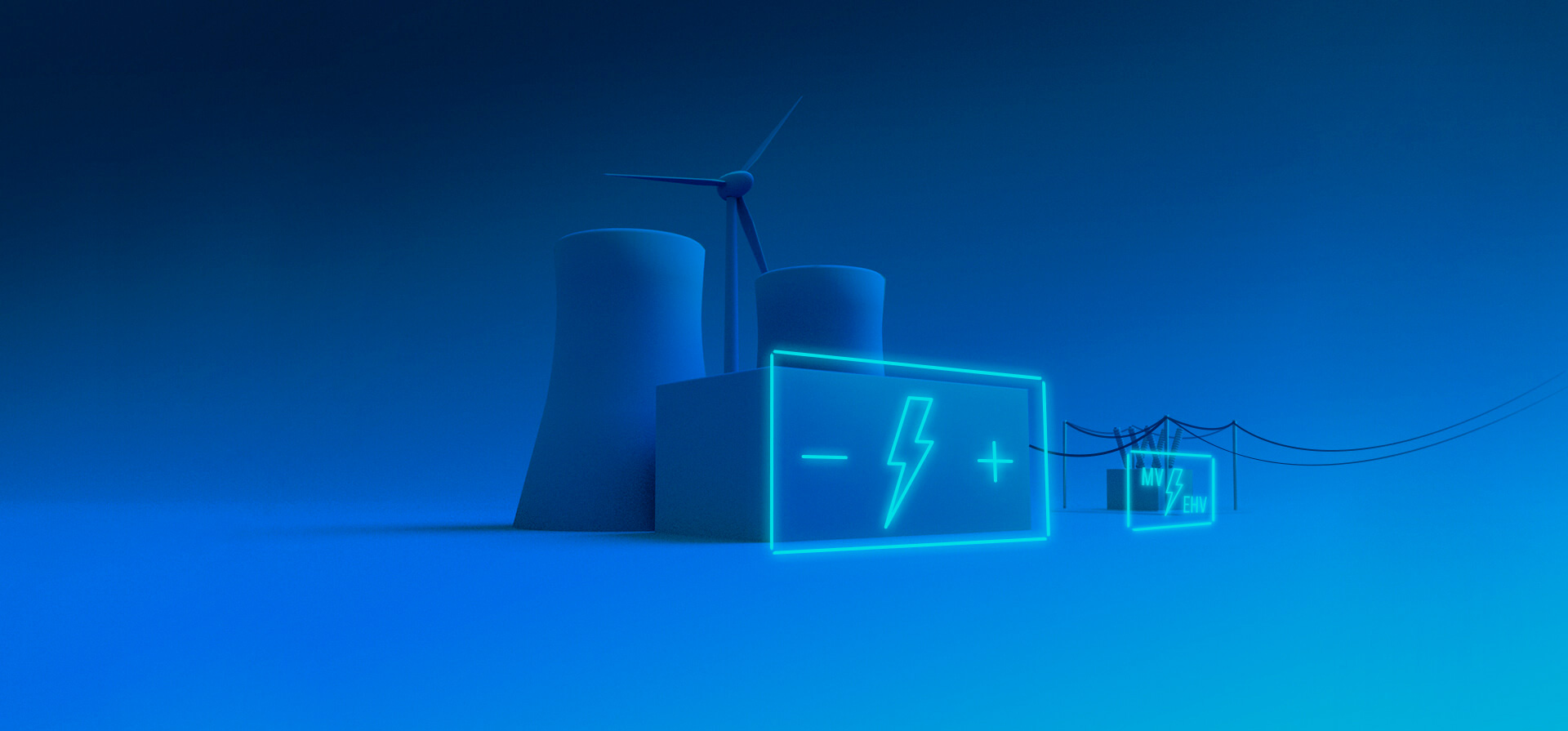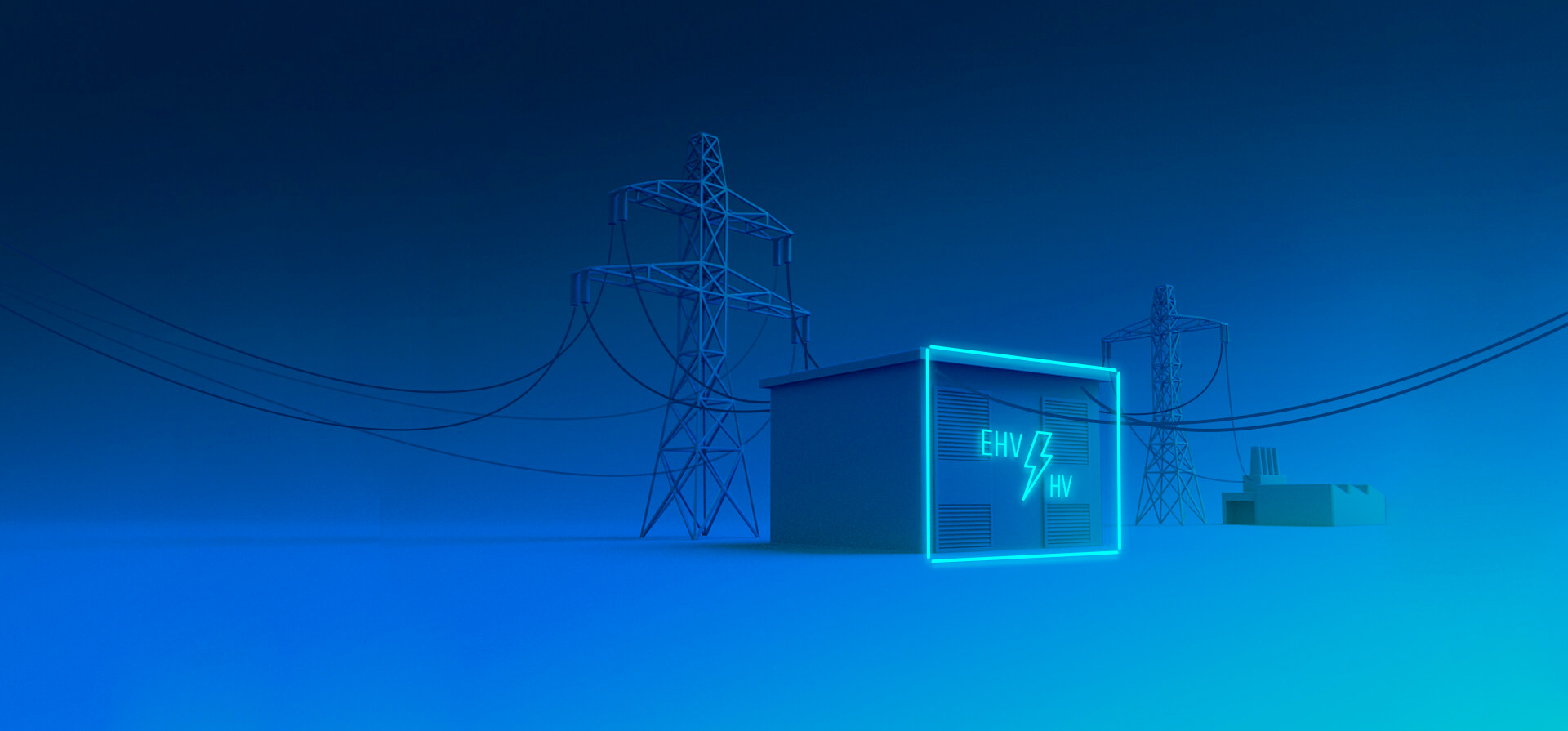PSE’s role in the power sector
We live in an era of electricity. Electric energy powers not only innumerable pieces of equipment but also all areas of our lives. Power lines and electrical substations have become permanent features of our landscape and today it would be hard for us to imagine daily living without electricity.
Yet few people are aware of how complex processes must take place “on the other side” of the power socket to ensure stable, undisturbed electricity supply.
Continuity of electricity supply is a result of an efficiently operating power system which comprises energy generating, converting, transmitting and distributing systems. The operation of the system is managed and electricity supply is taken care of by Polskie Sieci Elektroenergetyczne.








